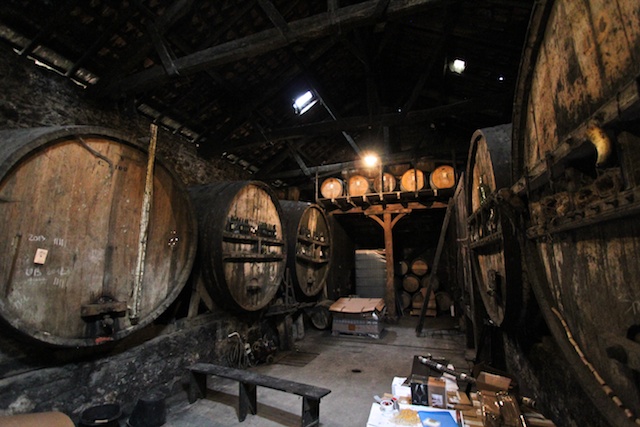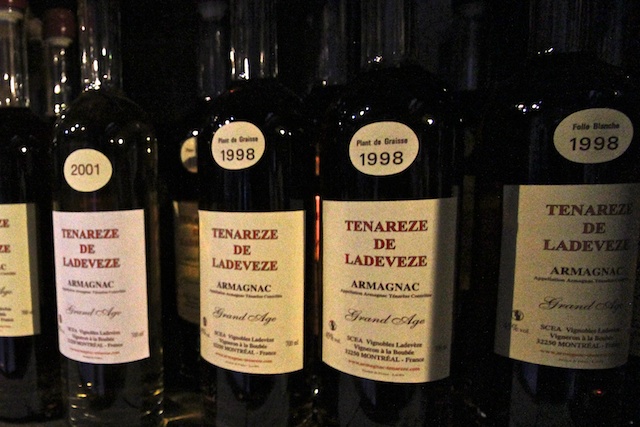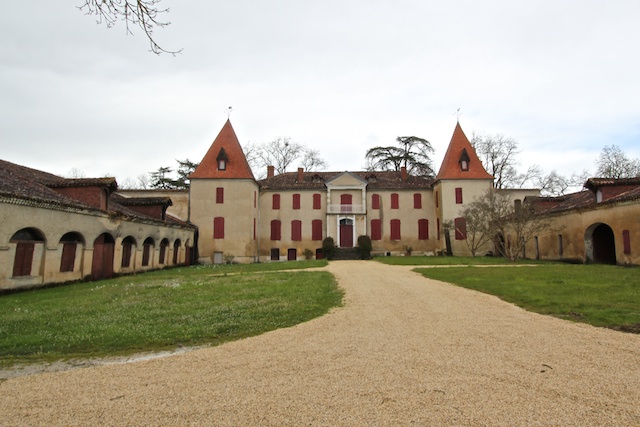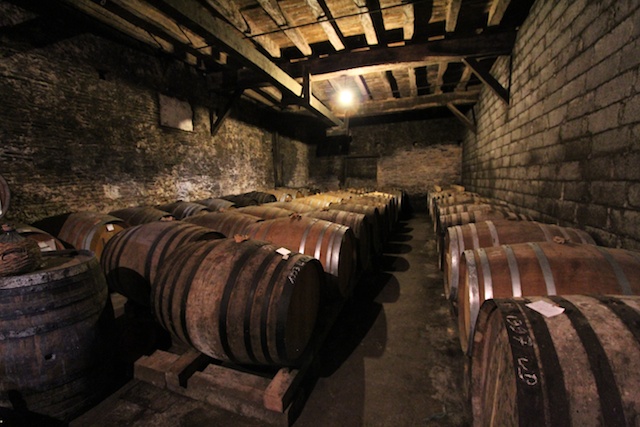France – Day 5: Separating the Pack

If you've shopped at K&L for Armagnac then you've definitely seen our numerous Pellehaut selections over the years. Located in the Tenereze region (just outside of Montreal where Charles's family lives), they're one of the larger producers in the area and they actually sell far more wine than brandy. However, large for the Tenereze is still smaller than Kilchoman on Islay – everything is relative, isn't it? We always do quite well with the Pellehaut selections because: 1) they're tasty; 2) they're inexpensive; and 3) they often taste quite similar to Bourbon. The 1996 selection we brought in last year was a huge hit with our American whiskey customers (we tasted it again today and we're still blown away by how much it tastes like mature Bourbon). We're working with the owners to add age statements to the front label, as you can see in the photo above. I think one of the reasons people don't buy Armagnac more often is because they don't realize how old these brandies are despite the vintage statement. "How can it be that cheap if it's thirty-two freakin' years old?!" they're thinking.
Look for a few new offerings from this year's trip including more of the 1973, some stellar 1978, and some tasty folle blanche selections from the mid-80s.

Appointment number two was a new face for us this year: Ladeveze out of Chateau Boubee. This father and son duo is actually located in the town of Montreal, just outside the main center, so it was odd that in all our time spent right nearby we had never visited the chai. Jean and his son Alexander are doing some very interesting things at Ladeveze, including higher warehouse maturation (evaporating more water to increase the proof of the spirit) and the planting of ultra-rare grape varietals for distillation. For example, they have a 1998 vintage made entirely from Plant de Graisse (apparently allowed by ancient appellation doctrine).

We were stunned by the quality of the Armagnac at Ladeveze, so much so that we tasted through just about everything they had available. They're much more interested in cask strength brandy than any other producer we visited, which is right up our alley. The spirits had character, a certain liveliness, and lots of gusto. Whereas the Pellehaut brandies are soft and graceful, the Ladeveze brandies have punch and power. The only thing I'm currently worried about is the price. Judging from the tags in their gift shop they may be asking a lot for their selections (which makes sense because they're fantastic). The question we have to ask ourselves is: do our customers care enough about artisinal Armagnac to pay a little extra?

After stopping for lunch with Bernard and Vero (Charles's brother-in-law and wife) we headed out to our last Armagnac stop before heading north for Cognac (I'll have to do an entirely separate post about Bernard's food this time around -- we ate raw pork like it was Gascogne sushi). Laballe is an old estate that stopped operating once the grandfather of the Laudet family retired and his son decided not to follow in his footsteps. Laudet's grandson, however, has decided to restart the family heritage and invited us to come taste through the older and newer vintages.

Because of the stoppage between generations everything they have at Laballe is either quite old or quite young. We needed more value, however, so we paid particular attention to some of the basic VS and VSOP selections. We were very, very impressed by their precocious drinkability. The entry level spirits from Laudet might be the $30 base brandies we've been searching for over the last three years. I was very excited when we left. The Armagnacs had spice and richness without too much oak-dominated tannin.
We just finished the three hour drive north, through Bordeaux, to the Grand Champagne region of Cognac. We'll be tasting with Dudognon tonight over dinner and hoping we can finally nail down an exclusive with Claudette.
More later!
-David Driscoll
